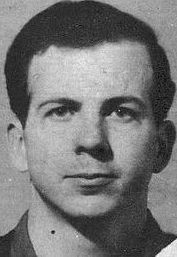conspirasy
 When President Kennedy was assassinated in Dallas, Texas on November 22, 1963, I was just a little girl of 8 years. I vividly remember how I found out about it. A neighbor girl came running across the street from her house to mine. I was on my way to meet her. It was in the middle of the street that I heard the news…our President had been assassinated. I was horrified, like most Americans were that day. It all seemed too impossible to comprehend. I knew nothing of politics back then, of course, I just knew that something horrible had happened to my country…the whole country. A nation doesn’t lose a president for any reason and not suffer from that loss. The loss of the president…the only president lost during office in my entire lifetime…not that attempts weren’t made or threatened, was so shocking to me. It’s something I will never forget.
When President Kennedy was assassinated in Dallas, Texas on November 22, 1963, I was just a little girl of 8 years. I vividly remember how I found out about it. A neighbor girl came running across the street from her house to mine. I was on my way to meet her. It was in the middle of the street that I heard the news…our President had been assassinated. I was horrified, like most Americans were that day. It all seemed too impossible to comprehend. I knew nothing of politics back then, of course, I just knew that something horrible had happened to my country…the whole country. A nation doesn’t lose a president for any reason and not suffer from that loss. The loss of the president…the only president lost during office in my entire lifetime…not that attempts weren’t made or threatened, was so shocking to me. It’s something I will never forget.
After the assassination, there was much controversy about what happened. Immediately…as always happens when anything big happens, there is a special commission appointed to find out what happened. I can see how that is important sometimes, but I don’t know that I think these commissions are always unbiased. As with most events such as these, there were, and still are, many people who do not think that Lee Harvey Oswald acted alone…or that he was even involved at all. Seven days after the assassination, Johnson appointed the President’s Commission on the Assassination of President Kennedy to investigate Kennedy’s death, and on this day, September 24, 1964, the Warren Commission, headed up by Chief Justice Earl Warren, gave their report to President Lyndon B  Johnson, who had been vice-president to President Kennedy, and therefore became president upon his death.
Johnson, who had been vice-president to President Kennedy, and therefore became president upon his death.
Following the report, those who disagreed thought that the whole thing was a conspiracy. The conspiracy theories were many, including the Mob, Cuban exiles, military leaders, the secret service, and even Lyndon Johnson. The Warren Commission concluded that Oswald was the “lone gunman” in the assassination, but that failed to satisfy some who witnessed the attack and others whose research found conflicting details in the commission’s report. Critics of the Warren Commission’s report believed that additional ballistics experts’ conclusions and a home movie shot at the scene disputed the theory that three bullets fired from Oswald’s gun could have caused Kennedy’s fatal wounds as well as the injuries to Texas Governor John Connally, who was riding with the president in an open car as it traveled through Dallas’ Dealey Plaza that day. Eventually, another congressional investigation was conducted in 1979, but that committee reached the same conclusion as the Warren Commission. During its almost year-long investigation, the Warren Commission reviewed reports by the Federal Bureau of Investigation, Secret Service, Department of State and the attorney general of Texas. It also pored over Oswald’s personal history, political affiliations  and military record. The Warren Commission listened to the testimony of 552 witnesses and even traveled to Dallas several times to visit the site where Kennedy was shot.
and military record. The Warren Commission listened to the testimony of 552 witnesses and even traveled to Dallas several times to visit the site where Kennedy was shot.
The enormous volume of documentation from the investigation was placed in the National Archives and much of it is now available to the public. Access to Kennedy’s autopsy records, though, are highly restricted. To view them requires membership in a presidential or congressional commission or the permission of the Kennedy family. I am one of those who find the conclusion of the Warren Commission to be…very simplistic, and hard to believe. I have watched several documentaries about the assassination, including the video of the actual event, and it just doesn’t make sense. Be that as it may, the commissions have spoken, and nothing more will ever be done about it. The many people involved are all gone now, so there is no one to say what really happened. So we only know what we have been told, but most of it doesn’t make sense to me.

